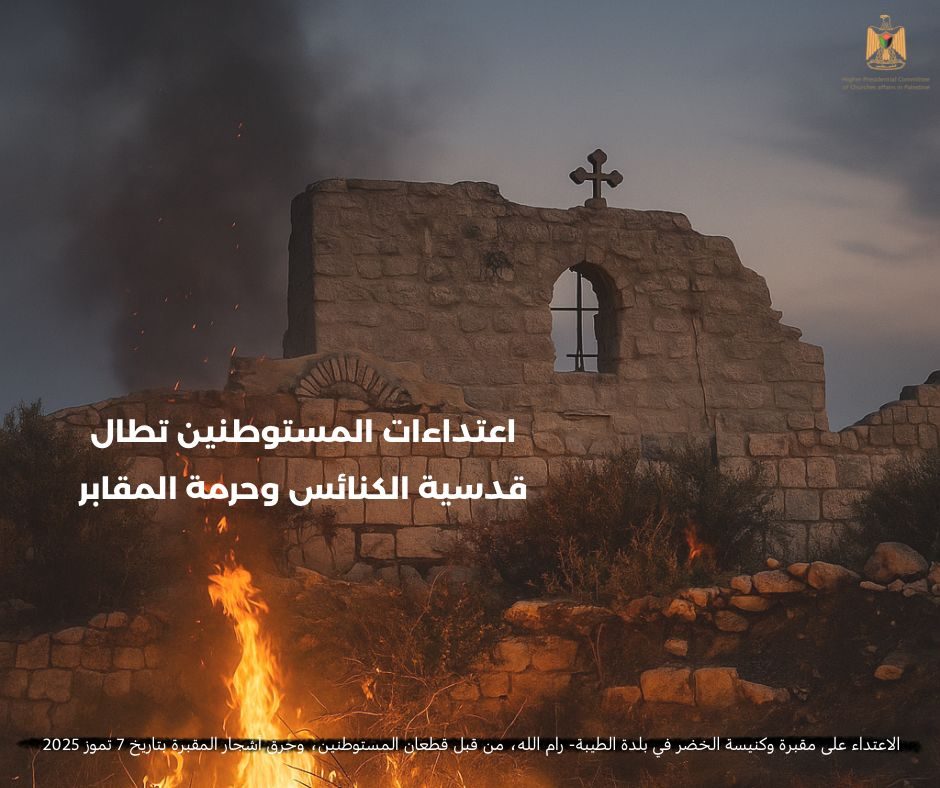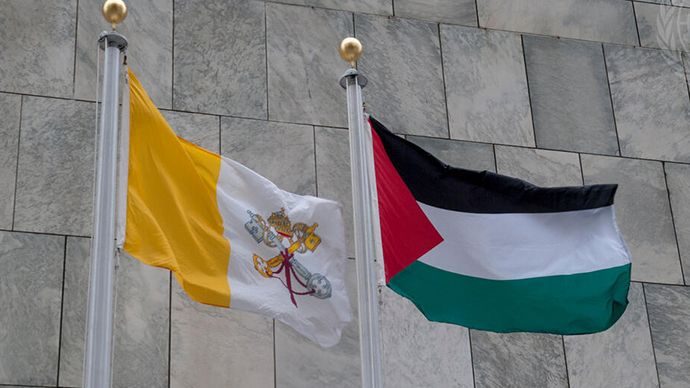The Christians of Jerusalem – the city at the centre of the world on medieval maps – are now a tiny fraction of the population, just 10,000 people, less than two per cent of the total, a huge drop from the 11 per cent a few decades ago. The great majority are Palestinian Arabs, though there is also a small and significant Armenian community.
Those Jerusalem Christians face the same problems as all Palestinians – for instance, should a Jerusalemite wish to marry someone from Bethlehem, the couple might have to wait up to 20 years for a permit to enable them to live together in Jerusalem.
But the Churches themselves face particular difficulties as a result of the activities of a number of radical Jewish settler groups (often funded from the US) whose objectives are at odds with the triune culture of Jews, Muslims and Christians which has given Jerusalem a unique character as a city sacred to three faiths. The problem is not that they represent majority Israeli opinion – they don’t – but that the electoral system in Israel means smaller parties have influence disproportionate to their actual numbers.
I was in Jerusalem with other journalists as the guest of Christian religious leaders who wanted to draw attention to the difficulties the Churches are facing: the Greek Orthodox Patriarch, Theophilus III: the Franciscan Custos (or Guardian) of the Holy Places, Francesco Patton; the former Lutheran Bishop of Jerusalem, Munib Younan; and the Latin Patriarch, Cardinal Pierbattista Pizzaballa.
There are obvious problems, notably radicals who abuse clerics. For instance, in November, the Armenian Patriarch was spat at by a solider in uniform as he went in procession with the cross. But the low-level physical and verbal abuse from radical Jewish groups all help create what you might call a hostile environment for the churches.
A far larger problem is the proposal to establish an extension of the National Park around the Mount of Olives, an area intimately bound up with the life of Christ: 20 Christian sites would be affected. It’s an unremarkable place to the east of the Old City. Much of the land belongs to the churches, some to local Palestinians and there are, besides, new settler properties. In principle, a national park seems innocuous. But it’s not.
Part of the proposal entails the building of a big promenade which would link two settler communities. As the Israeli human-rights group Ir Amin points out, once Israelis come to the park for recreation, they’ll expect armed police protection, and the upshot will be that the area will become unsafe for Palestinians.
The park would come under the Israel Nature and Park Authority rather than the municipal authorities, yet the area is in the Occupied Territories, so legally it’s outside the remit of Israeli law. The Authority would have the discretion to authorise developments as it sees fit – the churches and Palestinian residents would lose control of their properties.
The Custos was one of the Christian leaders who wrote to the government to complain: “These places are holy places. And for us, it is very clear what this means: a holy place is a place that has a strong connection with some episode of the life of Jesus for us, as Christians. And so for us, it is important that the holy places can be and continue to be of prayer, places of worship, and not simply places open to the public.” The proposals, often suspended, will next be considered by the authorities in August.
The municipal authorities of Jerusalem do not pay heed to the sensitivities of the churches either. It organises festivals next to the areas belonging to the churches which entirely disregard the character of the place. And parts of the Old City may be cordoned off for days, which means that access to and from the churches becomes impossible.
Patton observes that at the New Gate, which is next to his friary, “What we have seen in this past year is that there are more and more cultural initiatives inside or outside without consulting us. And so for example if there is an initiative in which there is music from 10pm until 5am. Usually at 5am I wake up and so that is not so respectful of the monastery where there are about 80 friars living and working.
“For me, what is important is that if there are initiatives that are so close to us, it is necessary to be involved, to be consulted. And there are occasions in the year in which the New Gate is partly closed, or completely closed. And so, for us, this means that we cannot go out and nobody can enter, and if there is a friar who has to go to the airport or is coming from outside, it is difficult to enter or leave. It is necessary, I think, to have coordination and to have dialogue.
“I understand all the reasons of security and other things. But, of course, for us it is important to have the possibility to enter into or exit from our home.”
As Cardinal Pizzaballa notes: “Unfortunately, in Jerusalem, everything is political.” And when it comes to the settler groups, he says their philosophy is exclusionary: “They have this attitude of ‘this place is ours’. Christians are tolerated or we are guests. But we are not guests: this is our house too.”
Then there are the activities of the settler group Ateret Cohanim, which involve strategic and hostile property purchases in the Old City – crucially, the Little Petra Hotel near the Jaffa Gate, and the Imperial Hotel, in an area of symbolic significance for the churches, as well as the large hostel of St John near the Holy Sepulchre.
These transactions were made possible because the previous Greek Orthodox Patriarch gave power of attorney to a financial adviser who sold the leases on the properties to the settlers on a dubious legal basis. The present Patriarch challenged these deals, but the Supreme Court rejected the last appeal a few months ago, notwithstanding the presentation of new evidence.
Daniel Seidemann, an Israeli attorney who specialises in geopolitical issues, declares that these property transactions do matter: “This is not an isolated incident. This is part of a general plan sponsored directly by the government of Israel to encircle the old city and its environs and to integrate it into a biblically motivated settler version of Jerusalem.
“This initiative fits into the cobweb of a general policy, which is to surround and penetrate the Old City with settlements and settler-related activities. And that is not only a threat to the hotels, but a threat to the character of Jerusalem and, more specifically, a threat to the viability of the Christian presence in Jerusalem, and is being perceived by the Churches as such.”
The problems of the Church in Jerusalem are of course nothing new. The Greek Orthodox Patriarch, Theophilus III, observes that they’ve had it harder in the past. “I’m not afraid,” he says. “We’ve been here for almost 2,000 years. Things holy and profane came and left, and the Church is still here.” That, at least, is something to hold onto.








